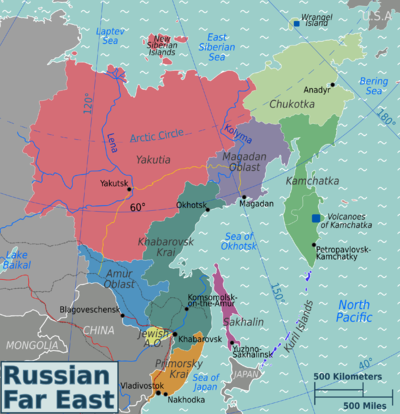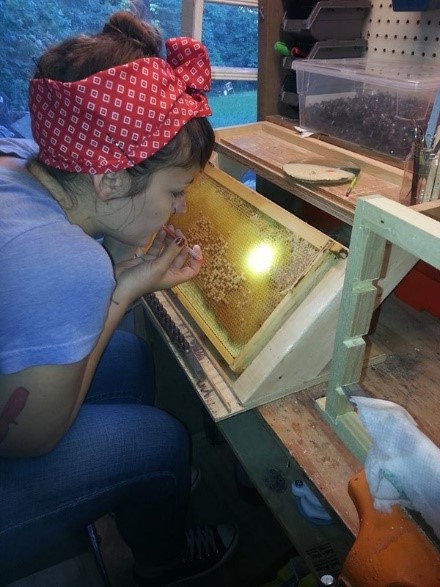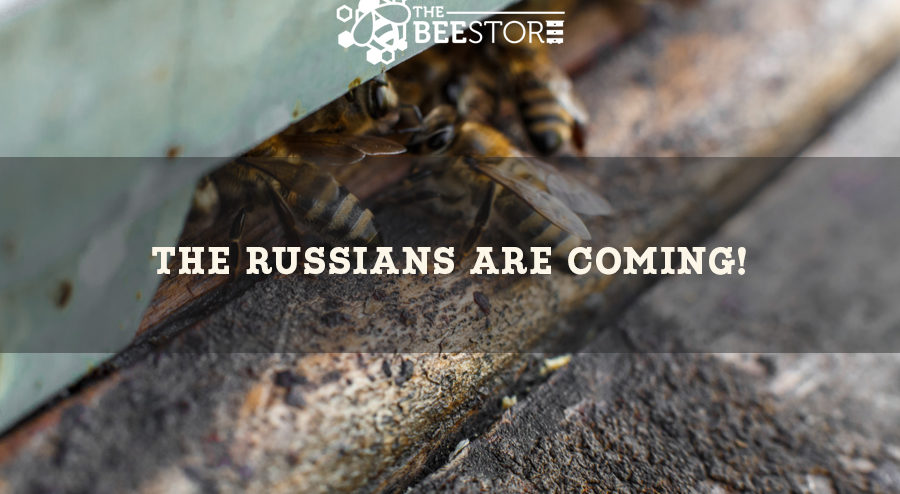OK, not those Russians. We are talking about Russian Bees….dare we say KGBees?
In response to the massive honeybee losses in the mid to late 1990s, the Honeybee Breeding Genetics and Physiology Lab in Baton Rouge, LA began importing bees from the Primorsky Krai region of Russia. Here in the eastern most region of Russia, the Russian honeybee (Apis Mellifera Carpatica) had been exposed to the Varroa Destructor mite for over 150 years. Not surprisingly, researchers found that Russian Bees are more than twice as resistant to varroa mites that other honeybees. They are also highly resistant to tracheal mites and seem “non-disposed” for Nosema apis.

Russian bees differ from their European cousins in a few ways. The do not build their colony populations until pollen is available, and they shut down brood rearing when pollen is scarce. Italians, by contrast, maintain a large brood and population regardless of the environmental conditions. This behavior can account for early winter starvation and a tendency towards robbing other colonies. Russian bees also maintain active queen cells throughout the brood rearing season, unlike their Italian or Carniolan cousins who usually build queen cells only when superseding or swarming. Russian bees developed this trait to survive in colder climates. While alarming to the beekeeper, workers will often destroy the queen cells before they fully develop.

Aside from the hygienic qualities of Russian bees, over-wintering is one of their strongest traits. Russian queens shut down earlier than normal, causing populations to drop sooner. They do not consume as much winter stores as other bees, mostly because of the unusually small cluster. A typical winter cluster is only 3-4 frames of bees and as low as 2 frames. It is not uncommon to open the hive in spring to find they have hardly touched the winter stores. Russian winter bees also live a month longer than other winter bees. This longer lifespan, resistance to tracheal mites, and being non-disposed to nosema leaves you with a colony of bees well equipped to survive the winter.

Russian bees are becoming more common as a Varroa Sensitive Hygienic (VSH) option for beekeepers and can be found from many breeders around the country. One should note that many of the Russian bees on the market are hybrid daughters of a breeder queen openly mated to any drone of a variety of stocks. While these hybrids are only partially resistant, they are still significantly more resistant to mites compared to Italians. The Russian Honeybee Breeders Association (RHBA) has been formed to maintain and improve the 18 pure Russian genetic lines. Our bees are sourced from Richland Honey Bees, a member of the RHBA, and are certified pure Russian.
The Bee Store will be offering Pure Russian Nucleus Colonies (Nucs) starting 1 November. Nucs will include four frames of bees of all ages, one foundation frame and a marked queen. This will be packaged in a cardboard nuc box, ready to transport to your apiary. Nucs will be available for pick up sometime after Memorial Day weekend of May 2019. Keep in mind, however, that bees respond to nature and not the beekeeper. Availability will solely depend on weather and environmental conditions in early spring, but we will keep you informed about pick up dates. Nucs must be picked up at The Bee Store; they will not be mailed or delivered.
The price is $200. While slightly more expensive than an Italian NUC (roughly $175), the cost savings in treatments and increased survival rates certainly make up for a modest increase.
Sources:
- North Carolina State University Apiculture Program (https://content.ces.ncsu.edu/comparison-of-russian-and-italian-honey-bees)
- http://www.russianbee.com/Russians.html
- http://www.russianbreeder.org/

